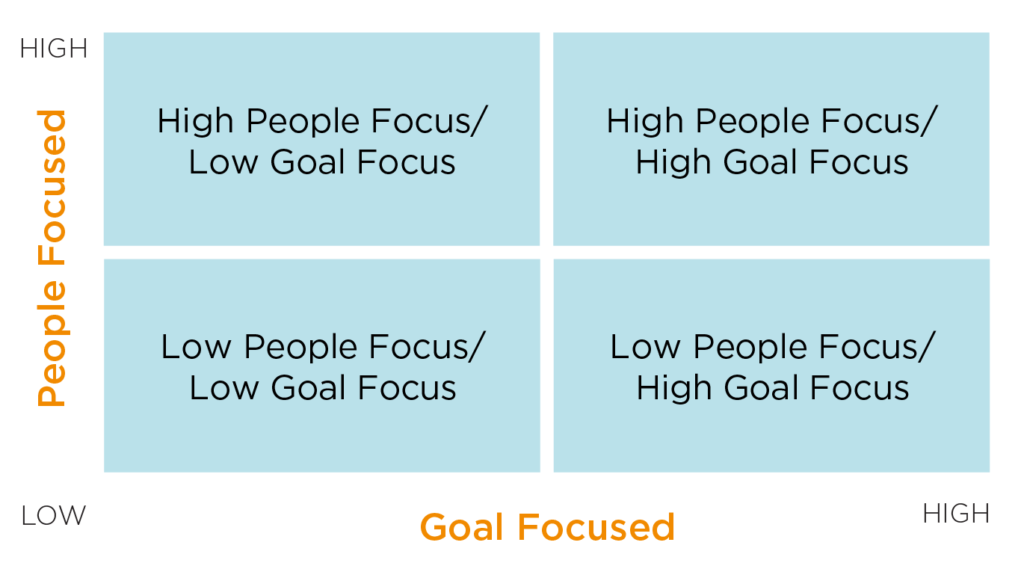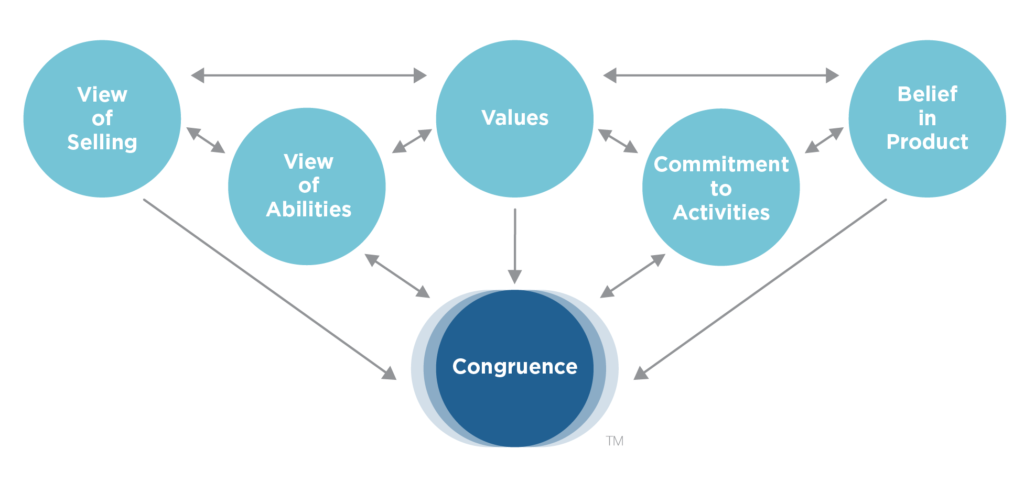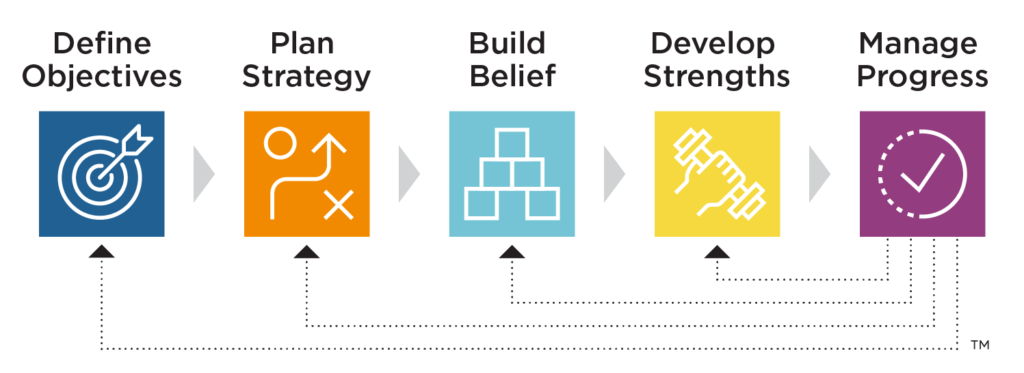5 Tips for High Performance Leadership
With changing demographics, it’s mission critical for leaders to enhance their coaching and culture to create the high-performing organizations of the future.
Advisors today, especially millennials, seek purpose in their job. How well does your firm’s leadership culture align with these needs? What is the effect on results?
In this article, our CEO, Mike Esterday overviews five key high performance leadership principles to develop culture, and Principal Financial Group’s Gary Karthauser will share how he applied each principle in his business center to create a “magnet” for recruiting top performers while significantly enhancing retention and productivity.
KNOW YOUR LEADERSHIP STYLE
Esterday: Today’s challenging environment requires self-awareness of your leadership style and that of your managers. When we look at two key traits — being goal-focused and being people-focused — leaders will fall into one of four quadrants. Some are overly focused on people and don’t want to hurt advisors’ feelings by challenging them. Others are goal-directed to the detriment of being sensitive to people’s feelings and often may run over people. Successful leaders blend both and know how to be flexible to the needs of their advisors.

Karthauser: Few leaders have a perfect balance between being people-focused and goal-focused. Most have natural traits in one and must work on the other. When my team members looked at their leadership-style results, it allowed them to be more effective working together and with those they coach daily. Knowing our leadership style has allowed a different level of communication and clarity. Whatever your leadership style, you must be able to develop people who have a sense of ownership in the outcomes that define success.
RECRUIT AND COACH TO PURPOSE
Esterday: Success in this (financial services) industry requires a clear sense of purpose, especially to survive the emotional peaks and valleys. Challenge yourself to think about the following dimensions and their effect on success. Do your people:
• View selling as a noble profession that creates value for clients?
• Believe they have the skills and abilities to be highly successful in sales?
• Exhibit values of sincerity, integrity and honesty in their sales behaviors?
• Understand and diligently do the necessary activities for success?
• Believe your solutions and services create value for clients?

Karthauser: When we ask advisors, “Why did you leave?” the answer is usually not tied to income; it is about purpose. There must be a connection to their values that keeps them engaged on a personal and professional level. Millennials want collaboration and to be part of a community with positive team spirit. More than ever, our top talent wants and needs to be associated with something bigger than itself, where it feels it can make a significant contribution that has a broader impact. Does your organization have a values-driven culture — above and beyond a framed statement on the wall? We’ve seen that when we help people see selling as a noble profession that reinforces their values. When they believe our solutions create great value for people, this alignment releases achievement drive and energizes them to do the necessary prospecting.
BREAK THE LAW OF LIMITED PERFORMANCE
Esterday: Often, people are stuck on plateaus of low performance because of a natural law called the Law of Limited Performance: People soon discover the level of performance their managers will settle for and gravitate to that level. Managers then assume that’s all these people are capable of achieving, so they accept it as fact and stop challenging them to get better. In the end, both reinforce what the other believes.
Karthauser: What are you daily communicating to team members by what you do and say and how you say it? It’s easy to unconsciously peg someone as a high performer or low performer. Planned weekly coaching time has driven accountability for our teams and leaders. Before, during and after each coaching session, think of all the reasons this person can succeed. Then communicate these points. We’ve found this helps people believe their goals are attainable and causes us, as leaders, to continually see more potential in them than in the past. Some managers tell me they don’t have time to coach to this activity each week, but I don’t believe you have an option if you want to grow your organization and develop others.

BUILD PEOPLE’S “AREA OF THE POSSIBLE”
Esterday: Each of us has a mental boundary or border — an area of the possible. We unconsciously evaluate our life experiences: successes, failures, moments of despair and moments of happiness. Then, based on our perceptions of the kind of people we are, we mentally draw a circle that forms the boundaries of our own inner beliefs. This mental boundary controls our actions, feelings, behaviors and abilities. Everything we do, achieve or accomplish is consistent with this inner-belief system. Our performance will not go beyond the limits we unconsciously place on ourselves.

Karthauser: Effective coaching begins by seeing potential in people who do not see it in themselves and then helping them discover it. Listen to and observe what your people are telling you about their belief boundaries. Limited performance is usually tied to beliefs formed many years ago. Coach people past that voice in their head that is holding them back by helping them set goals just beyond their current boundaries. Expand their area of the possible by celebrating breakthrough performances. In our organization, we’ve found that this not only builds confidence, it inspires others to follow suit. When a peer achieves at a new level, it quickly opens the door for others to change their view of possibilities. Success breeds success. There is no substitution for believing in people at such a high level that they break through to new levels of success.
As our managers think about their coaching strategies and practices, we remind them of this quote from Goethe: “Treat people as if they were what they ought to be and you help them become what they are capable of being.”
HIGH PERFORMANCE LEADERSHIP: TAKE PEOPLE TO THE NEXT LEVEL
Esterday: When helping people set goals, use a proven achievement system. The above model is a fully functioning, self-regulating process with steps to achieve desirable, believable goals. The five parts are: define objectives, plan strategy, build belief, develop strengths and manage progress. If the goal is achieved, set a new one. If it isn’t, review the steps to see where adjustments can be made.
Karthauser: During weekly coaching sessions, our managers work with advisors to build a plan based on attainable, measurable action steps. By building their belief that they have the talent, skill and ability to accomplish that goal, they help move them in the direction of goal attainment.
Creating a culture of excellent, high performance leadership isn’t easy. As leaders, these models can help us understand our people, coach them to higher performance and equip them to, as Wayne Gretzky says, “skate to where the puck is going to be.”
This article was originally written for the GAMA International Journal by Integrity Solutions’ CEO Mike Esterday and Principal Financial Group’s Gary Karthauser. Download a full PDF of 5 Tips for High Performance Leadership



